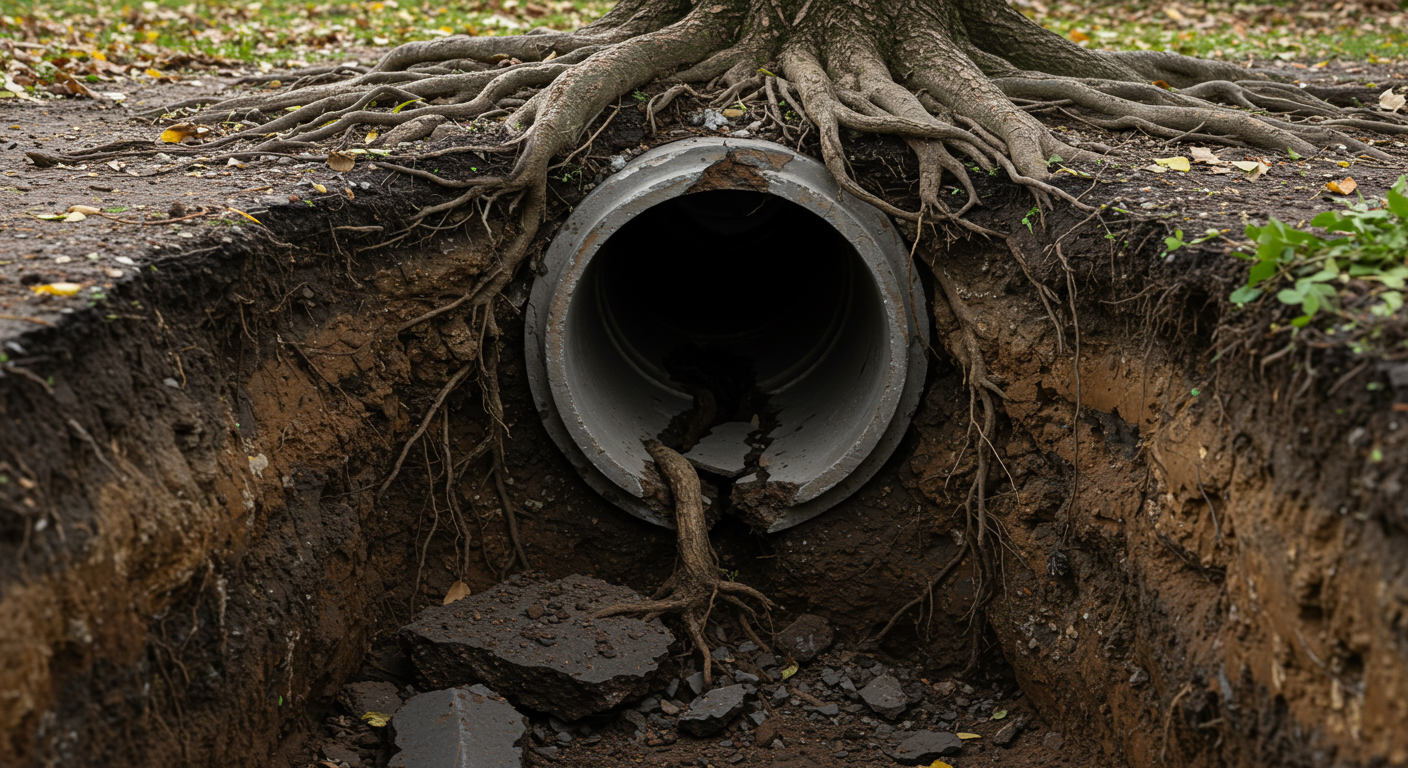How Tree Roots Cause Sewer Line Damage (And What to Do About It)

Tree roots and sewer lines are a bad combination. Homeowners may not notice a problem until slow drains, foul odors, or backups start happening—by then, root intrusion has already begun to damage the pipe. In this post, we’ll explain how tree roots invade your plumbing system, the warning signs to watch for, and what to do if you're facing this issue.
Why Tree Roots Target Sewer Lines
Tree roots are always in search of water, oxygen, and nutrients—and your sewer line offers all three. Even the tiniest crack or loose joint in the pipe is an open invitation. Once inside, the roots thrive in the warm, nutrient-rich environment and begin to grow rapidly. Over time, they can cause clogs, leaks, or even complete pipe collapse.
Root intrusion is especially common in older homes that still use clay, concrete, or cast iron pipes. These materials are prone to cracking and shifting over time, creating the perfect entry points for roots. Plastic (PVC) sewer lines are more resistant—but even they can be compromised by soil movement or improper installation.
Signs You May Have Tree Roots in Your Sewer Line
Early detection is crucial. Here are the common red flags:
- Slow drains or frequent backups (especially in multiple fixtures)
- Gurgling toilets or tubs when other plumbing is used
- Foul odors near drains or the yard
- Lush green patches in your lawn where the pipe may be leaking
- In severe cases, sinkholes or foundation issues from soil erosion
If you notice any of these issues, it’s time to schedule a camera inspection. This will confirm whether root intrusion is the cause and show how extensive the damage is.
Don’t wait for a total blockage. Root growth doesn’t slow down on its own—it needs to be removed and prevented.
What to Do About Root Intrusion in Your Sewer Line
1. Mechanical Root Removal
The first step is to clear the existing blockage. A professional plumber will use a mechanical auger, root cutter, or hydro jetter to slice through the root mass. While this restores flow temporarily, it's only the beginning of the solution.
- Root cutters physically remove the roots inside the pipe.
- Hydro jetting flushes debris and root remnants out of the system.
This should always be followed by further action to prevent regrowth.
2. Apply Root-Killing Chemicals
After mechanical clearing, chemical root inhibitors can be added to kill remaining root fragments and prevent new ones from forming. Popular options include:
- Foaming root killers (like RootX), which expand to coat the inside of the pipe
- Copper sulfate or rock salt, which dry out and kill root systems
These treatments must be used cautiously and only on pipes with active intrusion—not healthy, sealed pipes. Always follow the product’s instructions and consult a plumber to ensure effectiveness.
3. Trenchless Pipe Lining (CIPP)
If roots have caused cracks or frequent backups, cured-in-place pipe (CIPP) lining offers a long-term fix. This trenchless technology involves inserting a resin-coated liner inside your damaged pipe. Once cured, it forms a new, seamless interior wall that blocks roots from re-entering.
- Minimal digging
- 50-year life expectancy
- Stops leaks and future root intrusion
This is an ideal choice for homeowners who want a permanent solution without replacing the entire line.
4. Full Sewer Line Replacement
In extreme cases—like collapsed clay pipes or extensive damage—pipe replacement may be necessary. Though more costly, it ensures your plumbing is fully protected. Replacing with modern PVC piping significantly reduces the risk of future intrusion.
How to Prevent Tree Roots from Damaging Your Sewer Line
Preventive maintenance is key. Here’s how to stay ahead of root problems:
- Inspect your sewer line every 2 years with a plumbing camera
- Use foaming root treatments as a preventive (after consulting your plumber)
- Avoid planting trees or shrubs near sewer lines—especially willows, poplars, or ficus
- Know your landscape and call 811 before digging or planting
- Upgrade old clay or cast iron piping to seamless PVC
Routine inspections and proactive care can save you thousands in emergency sewer repairs.
Need Help With Sewer Line Damage?
At Top Flow Plumbing, we specialize in diagnosing and repairing sewer line problems caused by root intrusion. Whether you need a camera inspection, hydro jetting, or trenchless sewer line repair, our team is ready to help.
We proudly serve residential and commercial properties across McKinney, Frisco, Plano, and other North Texas cities.
Explore our residential plumbing services or get started with a free consultation today. You can also contact us if you're unsure where to begin.
Conclusion: Don’t Let Roots Ruin Your Plumbing
Tree roots in your sewer line aren't just an inconvenience—they’re a ticking time bomb. Acting quickly can prevent major damage, costly repairs, and messy cleanups. If you suspect root intrusion, trust the licensed professionals at Top Flow Plumbing to inspect, repair, and future-proof your sewer system.
Don’t wait for a full backup—schedule your sewer inspection today and protect your home from underground damage.
Keep Exploring Plumbing Insights
Looking for more expert tips and solutions? Check out our other articles for helpful advice, maintenance guides, and smart ways to protect your home’s plumbing system.
You Can Trust Us With Your Family's Plumbing Needs
Contact Top Flow Plumbing Co. today for reliable solutions tailored to your home’s plumbing needs so you don't have to worry about your home being ruined by plumbing issues.




